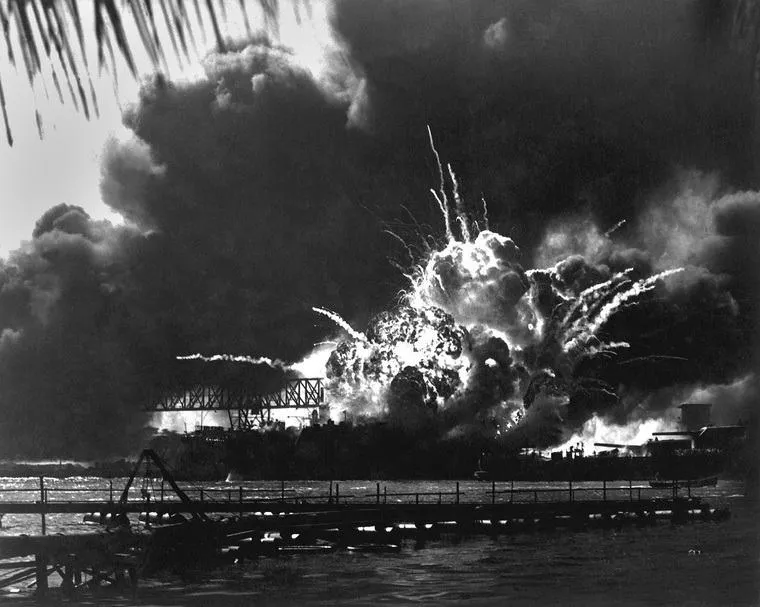World War II was the climax of wars during the 20th Century that resulted in the loss of tens of millions of lives, both military and civilian.

For the United States, the war was thrust upon us one Sunday morning, on December 7, 1941—“a date which will live in infamy,” as President Franklin Delano Roosevelt described it the following day in his speech requesting a declaration of war from the U.S. Congress. But in the early afternoon of December 7, at approximately 1:40 p.m. Washington, D.C. time, President Roosevelt was finishing lunch in his study on the second floor of the White House, preparing to work on his stamp album, when his telephone rang. On the other end, as announced by the White House operator, was Frank Knox, Secretary of the Navy. “Mr. President,” the secretary exclaimed, “the Navy Department has received a radio report from Honolulu stating that Pearl Harbor is under attack and that the military command had emphasized that this was ‘no drill.’”
Prime Minister Winston Churchill phoned President Roosevelt, “Mr. President, what’s this about Japan?” While devastated by the loss, Churchill knew this meant that Britain was no longer alone and the U.S. would enter the war. And to Churchill, this meant they would indeed be victorious at last.